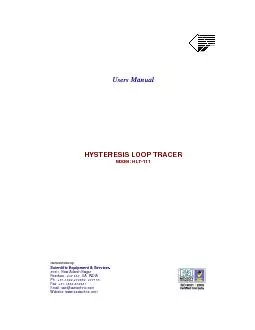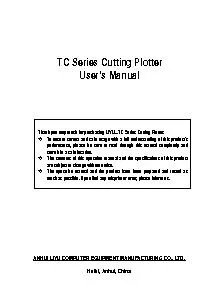PDF-Users Manual
Author : tatiana-dople | Published Date : 2015-10-11
HYSTERESIS LOOP TRACER Model HLT111 Manufactured by Scientific Equipment Services 3581 New Adarsh Nagar Roorkee 247 667 UA INDIA Ph 911332
Presentation Embed Code
Download Presentation
Download Presentation The PPT/PDF document "Users Manual" is the property of its rightful owner. Permission is granted to download and print the materials on this website for personal, non-commercial use only, and to display it on your personal computer provided you do not modify the materials and that you retain all copyright notices contained in the materials. By downloading content from our website, you accept the terms of this agreement.
Users Manual: Transcript
Download Rules Of Document
"Users Manual"The content belongs to its owner. You may download and print it for personal use, without modification, and keep all copyright notices. By downloading, you agree to these terms.
Related Documents














